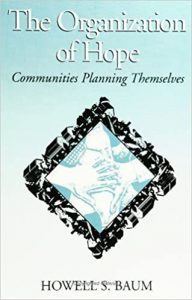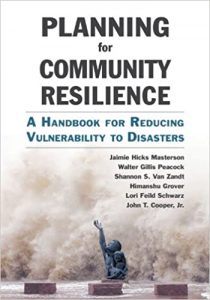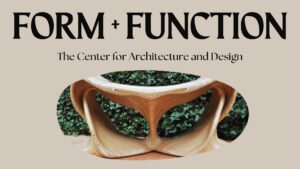Enjoy a curated list of favorites from our Outreach and Education Manager, Zevi Thomas.
 The Organization of Hope: Communities Planning Themselves
The Organization of Hope: Communities Planning Themselves
(SUNY series in Urban Public Policy)
By: Howell S. Baum
Analyzes the future of urban communities and presents models for community planning, taking into account different classes, ethnicities, and cultures.
Baum offers a provocative and refreshing approach to the topic of community. He combines the study of a place community and a cultural community, identifying unexpected commonalities, while recasting familiar and often stereotypical differences in a more complex fashion. His narrative redescribes familiar relationships in ways that introduce new questions and new opportunities for purposeful planned action.” ― Charles Hoch, College of Urban Planning and Public Affairs, University of Illinois at Chicago. (342 pages)
 Planning for Community Resilience: A Handbook for Reducing Vulnerability to Disasters 3rd None ed. Edition
Planning for Community Resilience: A Handbook for Reducing Vulnerability to Disasters 3rd None ed. Edition
By: Jaimie Hicks Masterson (Author), Walter Gillis Peacock (Author), Shannon S. Van Zandt (Author), Himanshu Grover (Author), Lori Feild Schwarz (Author)
In Planning for Community Resilience the authors describe an inclusive process for creating disaster-resilient communities. Based on their recovery work after Hurricane Ike in Galveston, Texas, they developed a process that relies on the Disaster Impacts Model. This handbook guides any community through the process of determining their level of hazard exposure, physical vulnerability, and social vulnerability with the goal of determining the best planning strategy.
Planning for Community Resilience will be invaluable to professionals working to protect their community from disturbance, including city planners, elected officials, floodplain managers, natural hazard managers, planning commissioners, local business leaders, and citizen organizers. (256 pages)
 e-topia 1st Edition
e-topia 1st Edition
By: William J. Mitchell
The global digital network is not just a delivery system for email, Web pages, and digital television. It is a whole new urban infrastructure–one that will change the forms of our cities as dramatically as railroads, highways, electric power supply, and telephone networks did in the past. Mitchell argues that we must extend the definitions of architecture and urban design to encompass virtual places as well as physical ones, and interconnection by means of telecommunication links as well as by pedestrian circulation and mechanized transportation systems. He proposes strategies for the creation of cities that not only will be sustainable but will make economic, social, and cultural sense in an electronically interconnected and global world. The new settlement patterns of the twenty-first century will be characterized by live/work dwellings, 24-hour pedestrian-scale neighborhoods rich in social relationships, and vigorous local community life, complemented by far-flung configurations of electronic meeting places and decentralized production, marketing, and distribution systems. (192 pages)

